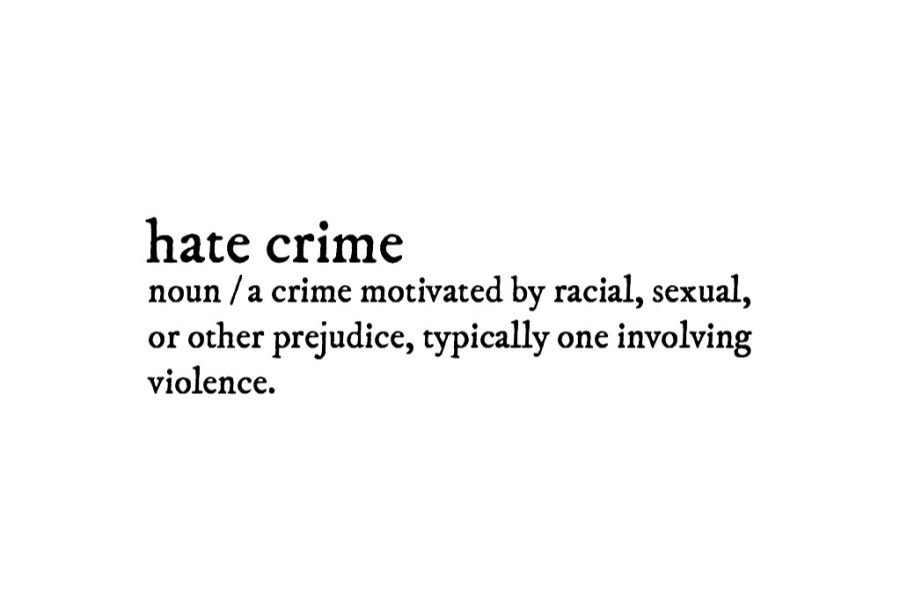The Ideology of Hate
With tragedy after tragedy, we asked the most important question: WHY? We cannot be satisfied with cop-out answers about why people are committing such heinous acts. This piece seeks to delve into the mindset of hatred.
In lieu of tragic events in Pittsburgh, it’s time for us to reevaluate what a hate crime is and why they’re occurring.
Hate crimes are not the direct result of a mental illness.
These infuriating, terroristic acts that seem to plague our society more frequently every single day are not just consequences of individuals with depression, a bipolar disorder, or Schizophrenia. While mental illness may be a factor, our country cannot hope to drive away that type of violence with antidepressants and medications.
There is one strong, sickening force behind the crimes that have been all over the news lately. This force is the reason for the heartbreak, the anger, and the division that all Americans are experiencing in the wake of these tragic events. We cannot just blame a lack of gun control, or insufficient background checks, or claim it’s randomized violence that is bound to happen.
The reason behind these acts is the toxic, hateful ideologies that are spreading like wildfire. These hurtful ideas based on false information and bigotry are the primary reason behind the hate crimes ravaging the United States.
Political reasons aside, it is clear that there has been a lot of division in our country lately. Most of this has stemmed from discrimination and an irrational fear of anyone who is different. In today’s world, with social media and so much information online, these ideas are becoming easier and easier to spread. It’s not difficult to find hateful messages, propaganda, and threats on the web. All you have to do is Google a keyword.
The increasing access to this kind of hostility is definitely leading to more crimes actually being committed. For example, from 2014 to 2017, hate crimes in the state of California have increased by 44%, which may seem like a pretty big number.
But that’s not even the worst of it.
In that same time period, hate crimes increased by 300% in San Jose and 200% in Philadelphia. These numbers are huge– and terrifying.
Hate crimes also tend to increase around political elections. 2008, 2010, 2012, 2014, and 2016 all saw more of them.
These statistics are not coincidences. There were not a higher amount of mentally ill citizens before an election. There were not more lenient gun control laws then, either.
The only difference is that there was more ideological polarization during these times. There was more uproar, more anger, and more hate circling around our elections. People believed outrageous–and even fabricated–stories.
That was the only thing that changed.
The FBI conducted a study in 2016 and found that there are typically three main reasons groups are targeted. About 59% of hate crimes were committed against someone for their race or ethnicity. Another 21% of victims were targeted because of their religion, while 17% were harmed for their sexual orientation.
Again, this is a direct result of hate that is so easy to find and spread. There are not more mentally ill people who live near African-American churches or Jewish synagogues. There are not more gun stores by gay nightclubs.
Instead, these groups of people are specifically picked out and targeted by racist, homophobic individuals who have a serious superiority issue. They’re not just mentally ill. They’re criminals who blamed someone else for the division taking root in their country. They’re monsters who were afraid of someone different.
Just describing someone who commits a hate crime as “mentally ill” is an insult to anyone who actually has a mental illness. Blaming their violence solely on that is an excuse and ignores a major part of the issue.
Unfortunately, the hate, bigotry, and division breaking down America don’t seem to be getting any better. People are angry and hurt. Politics seem to just be plain dirty lately. Violence is all over the news. Hate and propaganda spread incredibly fast online. It’s bone-chilling and terrifying. Hate crimes hurt everyone– the victims and the community that stands behind them.
The whole situation may seem bleak, but it is important to acknowledge just how major the problem is in order to come up with an effective way to fix it. Ignoring it won’t do a thing.
There is hope for change. There’s a new, intelligent, kind generation coming. This generation can set good examples, choose leaders that represent their virtues, and help others. They have the ability to overshadow the hate and darkness until it’s finally gone.
But first, the United States, as a country, cannot let itself become numb to the violence and the crimes. It is not normal to see a shooting on the news and just shrug, knowing it’s nothing special. It is not okay to accept hate crimes as part of our culture.
So, no, mental illness is not behind hate crimes. People who fear change and diversity are. Toxic ideologies are. The rapid spread of lethal messages online and in our media is. We need to look at the full scope of the issue if we ever want to fix it.

Kristen Kinzler is a sophomore at North Allegheny Intermediate High School. This is her first year as a journalist on the newspaper staff. She loves playing...


